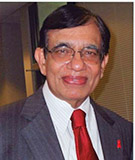
Controlling Heart Failure and Living Longer
New Treatments Brighten Future for Heart Failure Patients – Part I

When Stanley D took an early retirement to Florida at age 58, he had many things on his mind: playing golf, sunbathing on the beautiful beaches and spending time with his grandchildren. Alas, his plans were derailed.
One day, he felt a little winded while walking on the golf course. He chalked it up to recently putting on a few pounds, especially in his belly, and to getting older. At the insistence of his sister Phyllis, one of my long-term patients, Stan, came to see me.
During his office evaluation, he told me he had been cutting back on activities, feeling tired when doing his usual chores, and getting a little winded during brisk walks. He even noted puffiness in his ankles toward evening.
His medical history showed a significant event: He’d had a heart attack at 45 but had held up well after that. I performed a few noninvasive tests on him such as an EKG, a heart ultrasound examination and a nuclear stress test. All results revealed abnormalities with evidence of heart scarring, weakness in the heart muscle and ongoing blood flow problems in other areas. The condition is called “ischemia.” Also, his cardiac muscle pumping reserve, its “ejection fraction,” was a little down, too.
In other words, Stan was in early heart failure.
I told him that he had “ongoing coronary heart disease and early heart failure.”
“Heart failure?” he said with anxiety. “Isn’t that serious?”
“Well, it can be serious but only if you don’t treat it promptly and properly,” I said, trying to reassure him.
He soon underwent a triple-vessel coronary bypass surgery and recovered well. When he reported back to the office for a follow-up, he was beaming. He showed off his long surgical scar on his chest, saying, “I feel all better. Can I go back to golf now?”
“May be not so quick, Stan,” I said. “First, I want you to go through a full cardiac rehab program and when you feel better, maybe in a month, you should be ready to hit the golf course again.”
Stan followed those orders and after all the therapies he felt a lot better.
A diagnosis of heart failure (HF) -- although the term sounds ominous -- doesn’t mean the heart is going to stop anytime soon. It simply means the heart is not pumping enough blood, compromising its ability to deliver oxygenated blood to all the body's organs and tissues. Undiagnosed and unchecked, the condition can lead to debilitating or even fatal damage to the body.
Do you know that by the time you are 65 your heart has already beaten about 2.5 billion times without resting for a second? Consequently, you can expect some decline in its pumping power as you get older. With proper health maintenance, though, the heart can continue to function well into one’s 90s and even beyond 100.
Many years ago, when I was in medical school, a diagnosis of heart failure -- especially “chronic congestive heart failure” (CHF) -- was almost like a death sentence. The prospect was a variety of debilitating symptoms and eventual death. Patients usually were managed with a salt-restricted diet, digitalis and water pills, along with lots of rest. They were always short of breath, had frequent hospitalizations and died early.
Now, things have improved dramatically. With newer tests to evaluate the nature, cause and extent of cardiac muscle weakness, modern treatment includes many new drugs, procedures and surgery. They serve to provide the heart-failure patient a much better future.
The statistics regarding chronic heart failure remain disconcerting, though. More than 5 million Americans live with the disease. Nearly 25 percent of them are under 60 years old. More than 500,000 cases are being diagnosed every year. HF is responsible for 11 million physician visits each year, and more hospitalizations than all forms of cancer combined. It’s also the most common cause for hospital readmissions these days and insurance companies question all readmissions.
Furthermore, heart failure contributes to about 287,000 deaths annually. Sudden death is common in patients with HF, occurring at a rate of six to nine times that of the general population – a great concern.
The good news is that HF has become more manageable and the heart’s workload can be eased. With modern treatment, including special interventions, the death rate from heart failure is decreasing and patients are living longer.
This series will continue next month.
M.P. Ravindra Nathan, M.D., is a cardiologist and Emeritus Editor of AAPI Journal. For further reading, “Second Chance - A Sister’s Act of Love” by Dr. Nathan from Outskirts Press, can be found at www.amazon.com